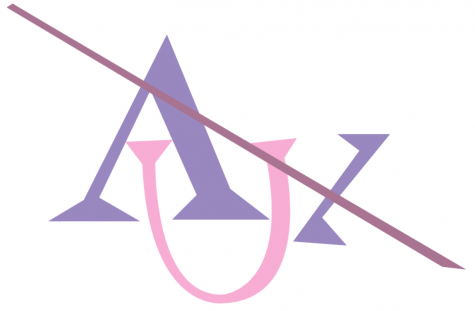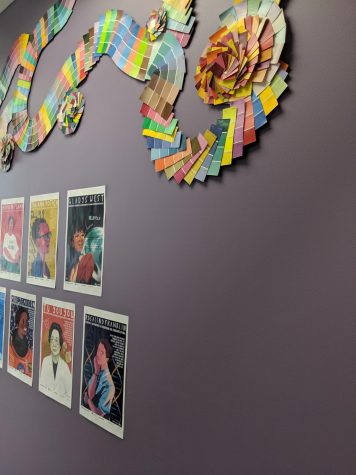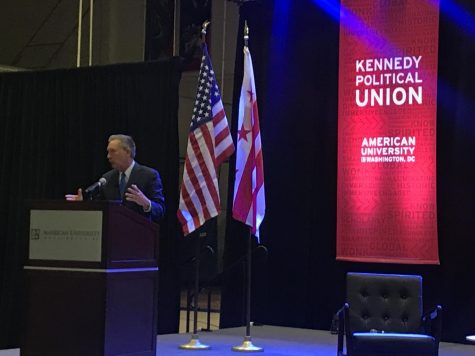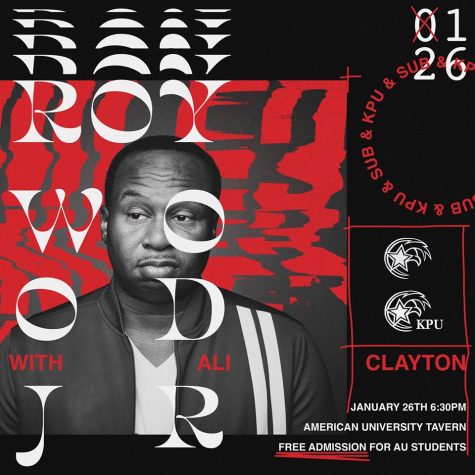AWOL's $12,000 Budget With Strings Attached?
You probably don’t remember the first installment of AWOL, even if you were at AU in the spring of 2008. One thousand copies of “Issue 001 – Trapped” were printed, though few AU students knew the publication existed.
Back then AWOL was contraband, with “Trapped” funded only by a $1,500 grant from the Center for American Progress (CAP) and $400 out of the pockets of a devoted editor who couldn’t afford it. Since the AU Media Board hadn’t yet approved us, we weren’t officially permitted to distribute on campus. Cleaning staff were instructed to throw away non-approved publications and many copies of that first issue of AWOL ended up in the trash. We relished our underground status, but few people read the magazine.
Two years later, things couldn’t be more different. We were approved by the Media Board in the spring of 2009 and became a recognized entity of AU. No longer is AWOL run from a private bank account, nor do we need to accost strangers in MGC in order to circulate our publication.
What does Media Board recognition mean? It means we have to follow AU’s inclusion and non-discrimination policies and follow University bureaucratic protocol when organizing events. The University legal team has to sign off on all contracts in our name. It also means AU’s lawyers will stick up for us if we get into trouble. And we can use University resources and facilities and distribute our magazines wherever we’d like on campus, assured that our work won’t be unceremoniously dumped into recycling bins.
Oh, and this year, it means we receive $9,395 from AU, on top of about $2,900 from CAP.
A $12,295 budget is larger than we ever dreamed of and it’s allowing us to drastically expand our reach both on and off campus. But as a publication that values its independence, roguish origins and dedication to critical inquiry, we feel compelled to ask: What does this money mean for our editorial independence? Where does it come from? What strings are attached? What will — and won’t — AU let us do with it?
***
“The bottom line is you’re editorially independent, which is part of the way we govern student media on campus,” Student Activities director Karen Gerlach told us.
But our freedom of expression is not guaranteed by the Constitution of the United States. The First Amendment states that government can’t restrict free speech; private educational institutions aren’t bound by it. “For private schools, their stance on free speech is more a reflection of their educational and societal philosophies than something merely compelled by law,” said Mike Hiestand, consulting attorney for the Student Press Law Center. As voluntary members of a private organization, we must submit ourselves to its rules or risk expulsion. Some schools have embraced the First Amendment spirit. Yale University, for instance, has a written agreement with its students and faculty to protect free speech.
AU doesn’t have this, but AU’s Academic Regulations on Student Media emphasize that AU “encourages the student media to practice the fullest possible freedom of expression commensurate with University policies.” And it seems that AU is willing to put that philosophy into practice.
A former editor of The Eagle who wished to remain anonymous due to the regulations of his current job recounted his experience for us. “I wrote quite a few critical stories during my time at AU, many of them about specific offices and officials,” he wrote in an email, but “never once did the University leverage its financial relationship with The Eagle to preempt a story, or threaten to cease helping us once it was printed.” (In addition to its on campus office space, The Eagle receives a line of credit from the University so it can begin printing each year before ad revenue begins coming in.)
Moreover, even after The Eagle printed a controversial column last spring on date rape that prompted outrage from much of the student body, senior University officials reiterated their commitment to free speech. In a letter to the University community, Vice President of Campus Life Gail Hanson and Provost Scott Bass wrote: “AU also has a commitment to freedom of expression. Consistent with that commitment, individuals have the right to express their opinions — even opinions we find offensive.”
***
Gerlach also explained that AWOL’s money comes from activity fees, not AU funds. “It’s all decided on by the Media Board,” she said. “They decide where allocations go, so administratively we have no control over how much funds you get to use toward your publication.”
This academic year, every student paid a $73.50 activity fee. Fourteen percent of that amount fuels the organizations that comprise the Media Board: ATV, WVAU, American Literary, AmWord, The Talon and AWOL. That’s about $114,000 allocated at a yearly meeting, based on the consensus of media organization leaders.
The process is entirely student-run, which is encouraging to organizations wary of offending the AU establishment. Additionally, “We do no prior review of content,” Gerlach said. That is, AWOL is not forced to have Student Activities review what we intend to publish. But that alone doesn’t guarantee us free rein.
The Foundation for Individual Rights in Education (FIRE) rates U.S. colleges and universities on their free speech practices. Based mostly on the length and — in their opinion — restrictive nature of AU’s harassment policies, FIRE gave AU a rating of “red,” the worst there is.

Harassment isn’t the only way we can go wrong. Among other procedural infractions, the Media Board constitution cites “mismanagement of budget and/or staff” and “unethical practices” as potential grounds for impeachment of publication staff. The Media Board also has a formal process for filing complaints against whole publications. If the review process finds that a student media outlet has violated the Media Board constitution, punishments range from official written reprimands to the prohibition of “future financial allocations to the offending medium.” That is, our $9,395.
Publication heads can also be impeached if they are found to have violated the Student Conduct Code by Student Conduct and Conflict Resolution Services (SCCRS).
This means that AWOL must follow the Student Conduct Code. Though we could advocate against it, if writers or editors violate or admit to violating it in print they can potentially face SCCRS discipline.
***
While we don’t have impunity from institutional meddling, we have plenty of evidence to suggest that AU has a culture respectful of free speech and the autonomy of student publications. When the going gets rough, AU has held to this policy. For that they should be commended.
So what are we doing with our money? It can cost up to $3,000 to print an issue of the magazine, and this year we intend to publish three times. The remainder of the money will be spent on maintaining our website, buying software like Adobe Creative Suite and Microsoft Word for our new office computer, hosting magazine release parties and other miscellaneous expenses.
We’ll do all of it with confidence in our autonomy. The Media Board is an institutional structure that protects student publications by keeping funding decisions firmly under student control. It would take an outrageous abuse of power by any University official to successfully interfere in this process.






